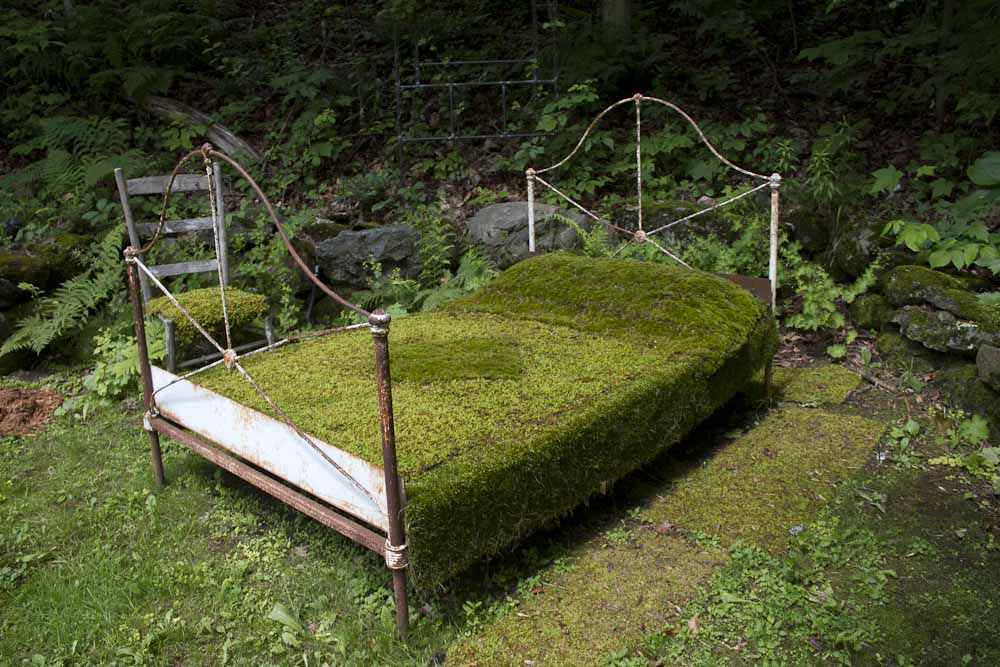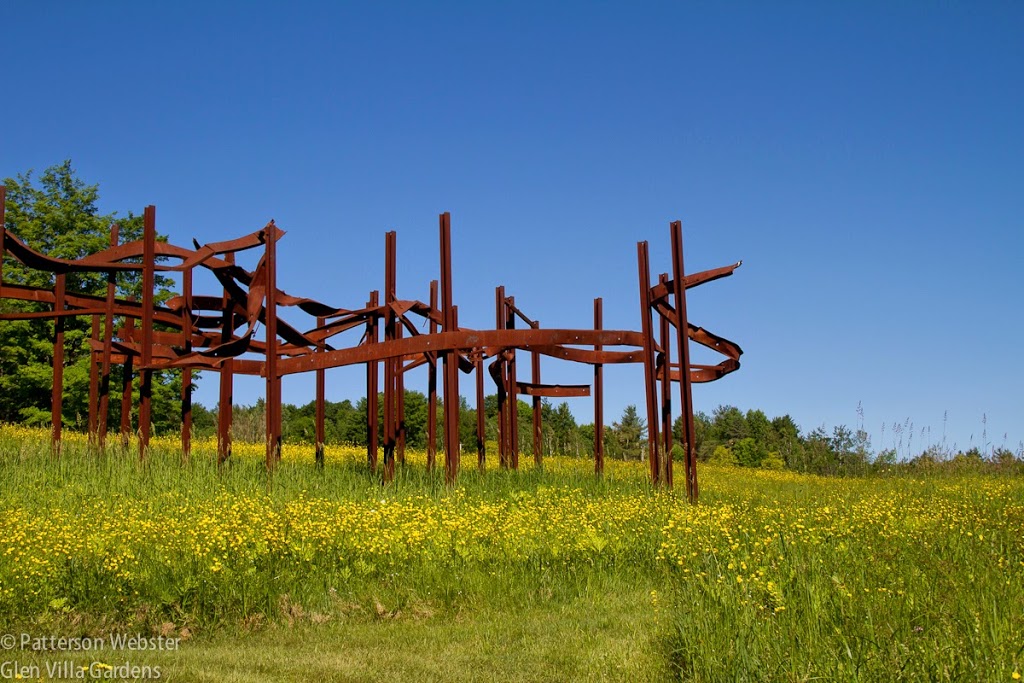A few weeks ago I told the story of how Glen Villa got its name, from the old resort hotel that once was here. The hotel did more than provide a name, however. It — or rather, the traces it left behind — transformed my way of thinking about gardens and landscape. From an approach based on traditional horticultural aesthetics, I moved to one based on concepts and ideas.
The shift took place gradually, but without question it began with my discovery of the marks that Glen Villa Inn left on the land. In September 1996, shortly after my husband and I acquired our property, I went for walk to explore the woods around the house. Following what seemed to be an old road, I came upon an unnaturally flat area on the side of the hill: clearly the site of a building. Looking around, I noticed something glinting in the leaf litter that covered the ground. A piece of china had caught the light. Rubbing off the dirt, I made out some words: Glen Villa Inn.
Were there more pieces? I began to dig with my bare hands and quickly uncovered more. And more, and more. I came back with a bucket and shovel and began to dig in earnest, eventually filling four full sized garbage pails.
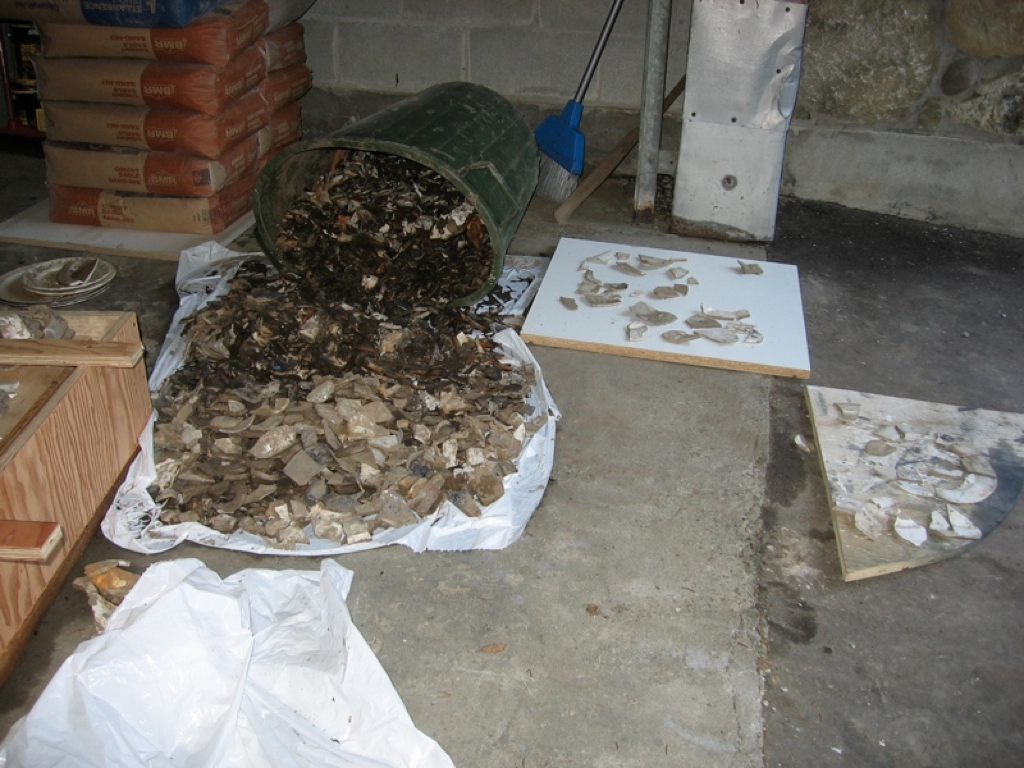
I spread the pieces of china on the floor of the garage to sort them by size and pattern. Here are some that I found, before they were washed.
I had no idea what to do with these shards, but I knew an idea would come eventually. And it did: The China Terrace. In the woods where I discovered the broken china I recreated the old hotel — not literally but imaginatively, drawing a sketch of what it had been and allowing people to fill in the picture on their own.

The door to the China Terrace is marked with old porch pillars that I found in a local antique store cum junk shop.
As you can see in the photo above, at the entry to the hotel there is a circular mosaic that serves as a welcome mat. Made from the broken china pieces, the mosaic replicates the hotel crest. The words are clear: Glen Villa, Massawippi Lake.
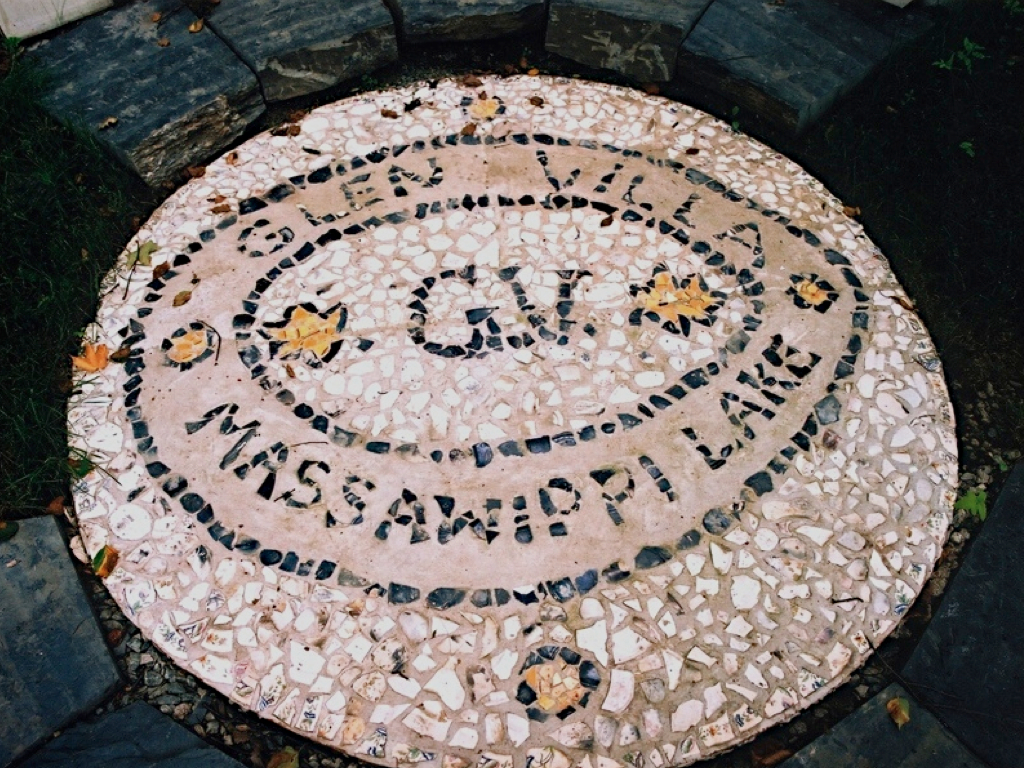
Pieces of china from the hotel are mixed with china we used when our family was young. The yellow bits are maple leaves.
The China Terrace got its name from the pieces of broken china, and they feature throughout the space. The hotel isn’t a real building; there are no walls and no roof; different rooms are delineated on the ground only by cement bricks inset with broken china that are set into the ground like walls at an archeological dig.
The bedroom is simple — only a bed and a chair beside it, with a hint of a rug on the ground.
In the dining room the table is arranged as it might have been in 1909, when the hotel burned to the ground. To set it, I used the broken china that I found and added to it plates that our children used when they were growing up.
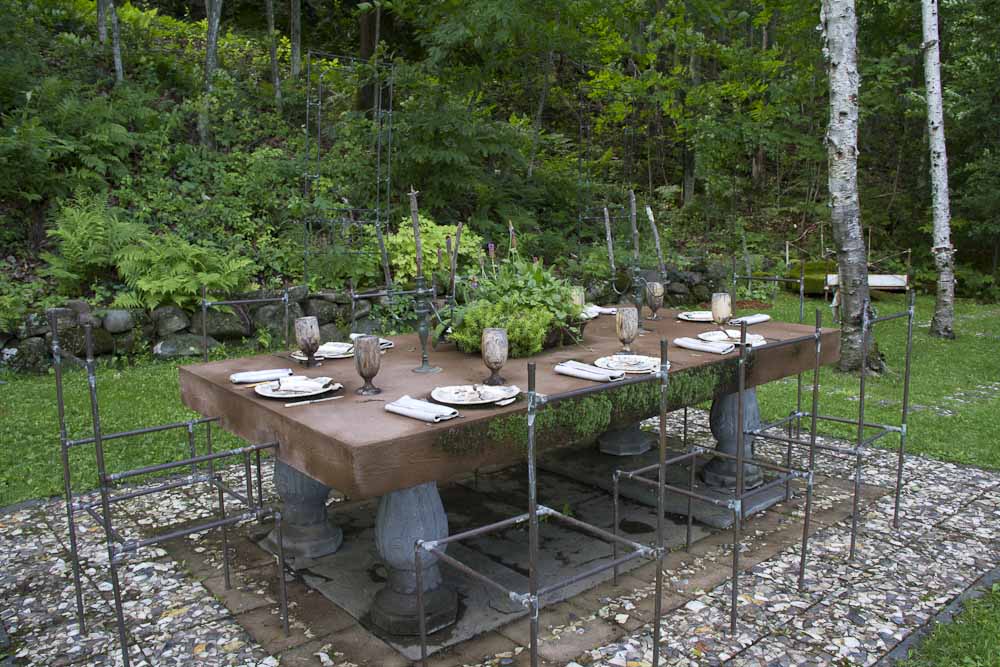
The dining room table is made of cement tinted red to suggest a velvet tablecloth. Moss is now growing along the side of the table.
With the help of a local potter I made ceramic napkins; a local craftsman made wooden goblets inscribed with the Glen Villa crest.
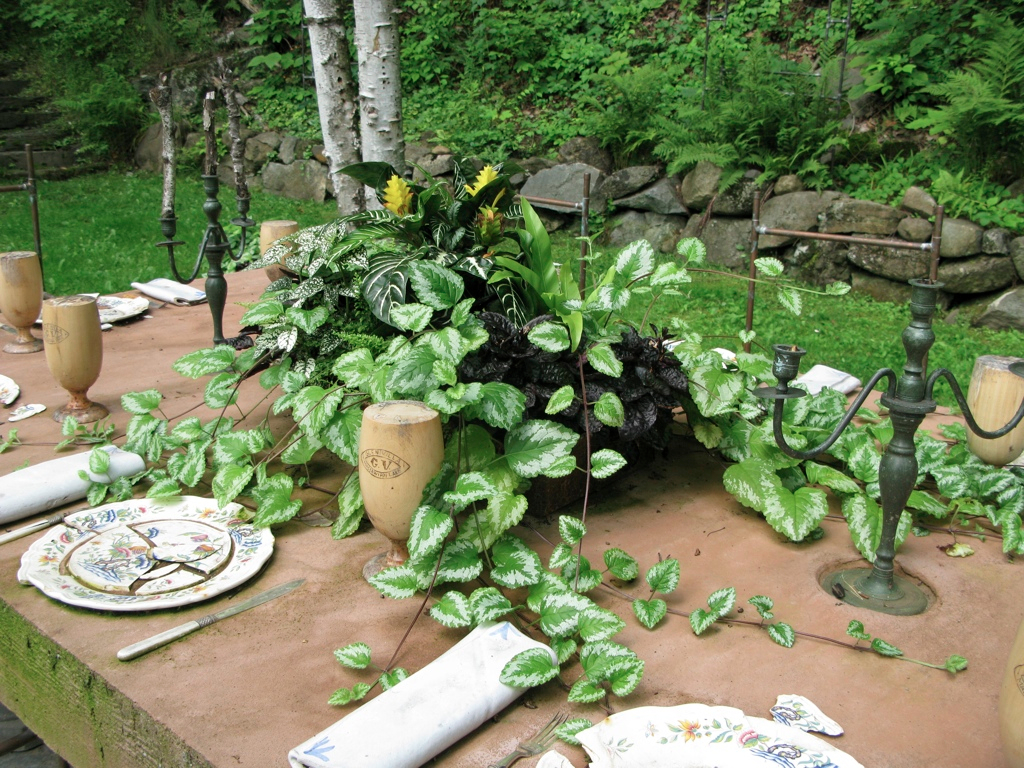
The candles are sticks I picked up in the woods. I use different plants in the centrepiece every year to add variety.
I made a rug to go underneath the table, embedding more broken china shards into cement squares. Again, I combined china from the hotel with china that our children had used, to underline the connection between the story of our family and the story of the site itself.
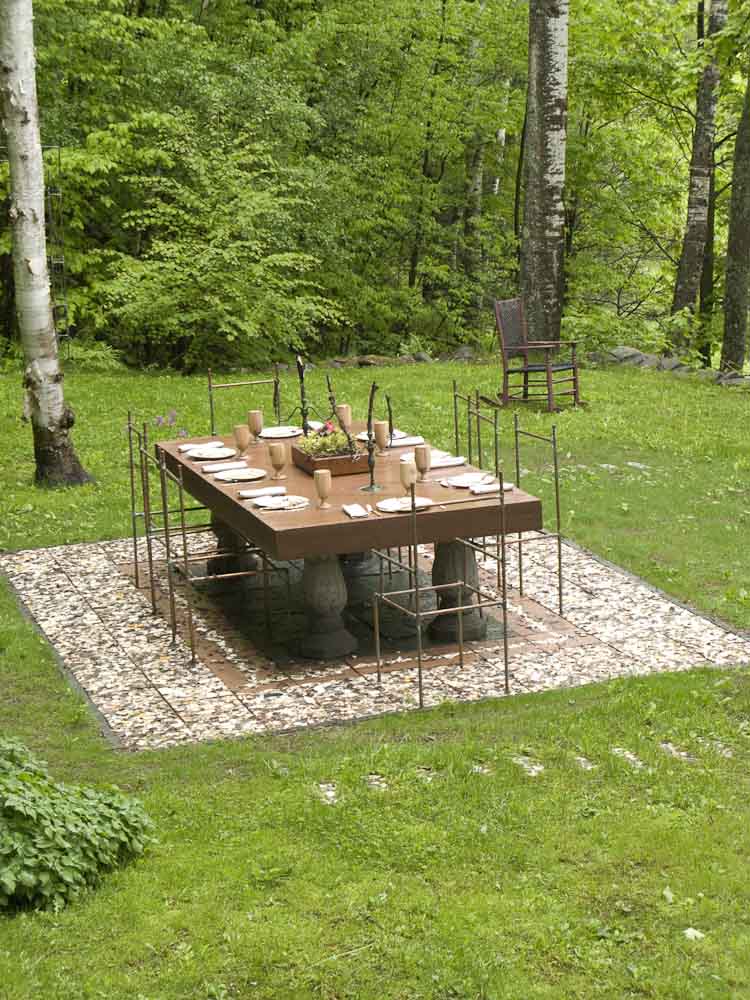
A rather handsome rug, if I do say so myself. Cement bricks set into the grass mark the ‘walls’ between rooms.
The China Terrace is an illustration of conceptualism in garden design. The history of the site is the concept or guiding principle that dictates what is added to, or changed on, the site. While I want the area to be appealling aesthetically, if there is a conflict between aesthetics and concept, the concept takes precedence.
The same reliance on the history of the site appears in many other parts of the garden. Always unpinning history, however, is the connection between the past and the present, between the people who used to live at Glen Villa and the people who live there now.
This connection guides me in every thing I do at Glen Villa. You see it clearly in the large sculpture Bridge Ascending, where parts of an old covered bridge that was important in my husband’s childhood have been brought to life again in a farm field.
You see it in the installation called Abenaki Walking, where the first inhabitants of the land are honoured.
You see it less obviously in The Aqueduct, a project inspired by memory.
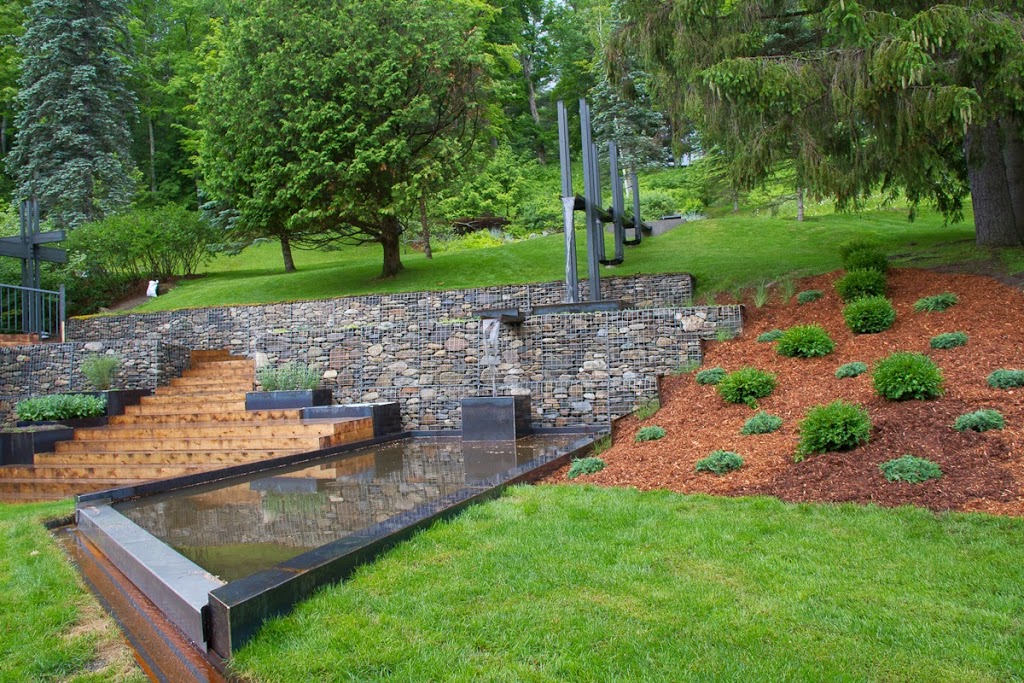
A desire to recreate the sounds of the stream beside our old summer cottage was the initial inspiration for The Aqueduct.
In many places at Glen villa memory and identity provide the propelling force. The Asian meadow and the yin/yang refer to the years we lived in China; the design of the Skating Pond was based on a painting I loved as a child and its name to a sport my husband loves; the magnolia and boxwood that appear in the Lower Garden and The Egg, the formal oval in the woods that so desperately needs revamping. recall Virginia, where I grew up.
Memories shape our identity, reminding us of who we are — and of who we were — and as such they have an incredible emotional power. A garden that springs from these concepts to evoke an emotional response is what I am striving to create.
Memory and identity have figured large in garden history. How these traditional notions relate to Conceptualism is a topic I need to consider a lot more carefully than I have to date. A job for the future: what can be more appealing as this year moves towards the next?

